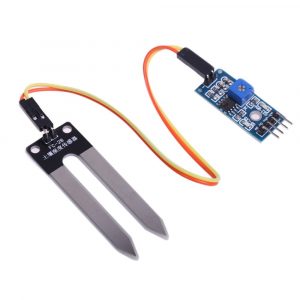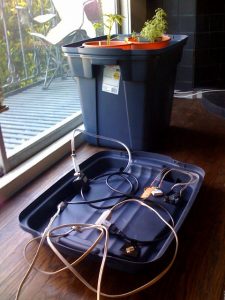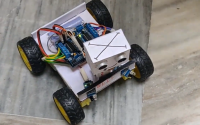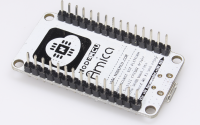Soil Moisture Sensors
Soil moisture sensors are electronic devices that are used to measure the amount of water present in soil. They are widely used in agriculture, landscaping, and gardening applications. In this blog post, we will take a closer look at soil moisture sensors and how they work.
Soil moisture sensors typically consist of two parts: a probe and a sensor. The probe is inserted into the soil and the sensor measures the electrical resistance between two electrodes. The resistance is directly proportional to the amount of water in the soil. The sensor then sends a signal to a microcontroller or data logger which can then be used to track and analyze the moisture level of the soil.

There are several different types of soil moisture sensors available, each with their own unique features and capabilities. Some common types include:
- Capacitance-based sensors: These sensors use the principle of capacitance to measure the amount of water in the soil. They typically have a metal probe that is inserted into the soil and a sensor that measures the capacitance between the probe and the soil. Capacitance-based sensors are highly accurate and are widely used in agriculture and gardening applications.
- Time Domain Reflectometry (TDR) sensors: These sensors use a technique called time domain reflectometry to measure the electrical properties of the soil. They typically have a metal probe that is inserted into the soil and a sensor that measures the time it takes for an electrical signal to travel through the soil. TDR sensors are highly accurate and are widely used in agriculture and landscaping applications.
- Resistance-based sensors: These sensors use the principle of resistance to measure the amount of water in the soil. They typically have a metal probe that is inserted into the soil and a sensor that measures the resistance between the probe and the soil. Resistance-based sensors are highly accurate.

Use of Soil Moister Sensor
- Soil moisture sensors are used in a variety of applications, including agriculture, landscaping, and gardening. In agriculture, soil moisture sensors are used to optimize irrigation systems and to improve crop yields. They are used to measure the amount of water in the soil and to ensure that crops are receiving the right amount of water at the right time. This can help farmers save water, reduce costs, and increase crop yields.
- In landscaping, soil moisture sensors are used to measure the amount of water in the soil and to ensure that plants are receiving the right amount of water. This can help landscape professionals save water, reduce costs, and improve the health of plants.
- In gardening, soil moisture sensors are used to measure the amount of water in the soil and to ensure that plants are receiving the right amount of water. This can help gardeners save water, reduce costs, and improve the health of plants.
- In addition, soil moisture sensors can also be used in other applications such as monitoring the moisture level of soil in construction sites, to ensure the soil has the appropriate level of moisture for laying foundations and other structures, this can help to prevent cracking and settling. They can also be used in environmental monitoring, measuring the moisture level of soil to track the health of wetlands, forests, and other ecosystems.
Overall, soil moisture sensors are versatile and widely used electronic devices that are essential for monitoring the moisture level of soil. With the advancement of technology, the accuracy and functionality of soil moisture sensors are continuously improving, making them an essential tool for a variety of applications. They can help farmers, landscapers, gardeners and other professionals to save resources, reduce costs, and improve the health of plants and soil.



